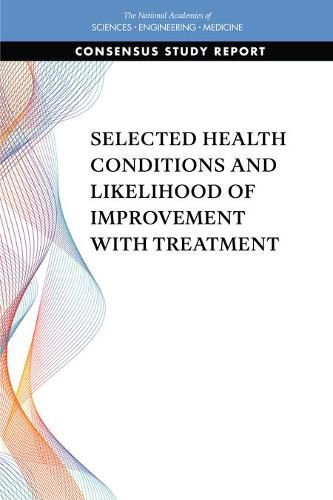Selected Health Conditions and Likelihood of Improvement with Treatment
National Academies of Sciences, Engineering, and Medicine,Health and Medicine Division,Board on Health Care Services,Committee on Identifying Disabling Medical Conditions Likely to Improve with Treatment

Selected Health Conditions and Likelihood of Improvement with Treatment
National Academies of Sciences, Engineering, and Medicine,Health and Medicine Division,Board on Health Care Services,Committee on Identifying Disabling Medical Conditions Likely to Improve with Treatment
The Social Security Administration (SSA) administers two programs that provide disability benefits: the Social Security Disability Insurance (SSDI) program and the Supplemental Security Income (SSI) program. SSDI provides disability benefits to people (under the full retirement age) who are no longer able to work because of a disabling medical condition. SSI provides income assistance for disabled, blind, and aged people who have limited income and resources regardless of their prior participation in the labor force. Both programs share a common disability determination process administered by SSA and state agencies as well as a common definition of disability for adults: the inability to engage in any substantial gainful activity by reason of any medically determinable physical or mental impairment which can be expected to result in death or which has lasted or can be expected to last for a continuous period of not less than 12 months. Disabled workers might receive either SSDI benefits or SSI payments, or both, depending on their recent work history and current income and assets. Disabled workers might also receive benefits from other public programs such as workers’ compensation, which insures against work-related illness or injuries occurring on the job, but those other programs have their own definitions and eligibility criteria.
Selected Health Conditions and Likelihood of Improvement with Treatment identifies and defines the professionally accepted, standard measurements of outcomes improvement for medical conditions. This report also identifies specific, long-lasting medical conditions for adults in the categories of mental health disorders, cancers, and musculoskeletal disorders. Specifically, these conditions are disabling for a length of time, but typically don’t result in permanently disabling limitations; are responsive to treatment; and after a specific length of time of treatment, improve to the point at which the conditions are no longer disabling.
This item is not currently in-stock. It can be ordered online and is expected to ship in approx 4 weeks
Our stock data is updated periodically, and availability may change throughout the day for in-demand items. Please call the relevant shop for the most current stock information. Prices are subject to change without notice.
Sign in or become a Readings Member to add this title to a wishlist.


